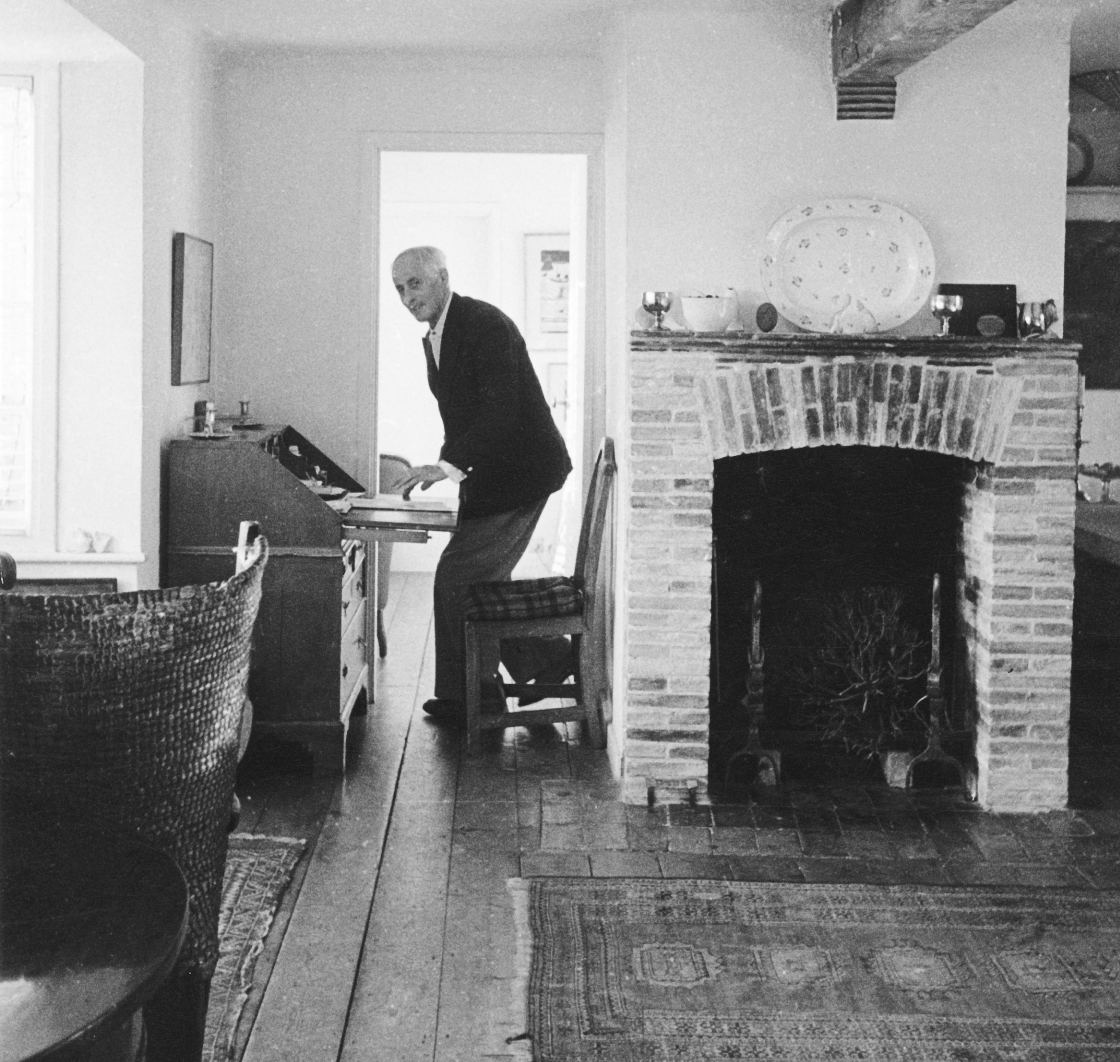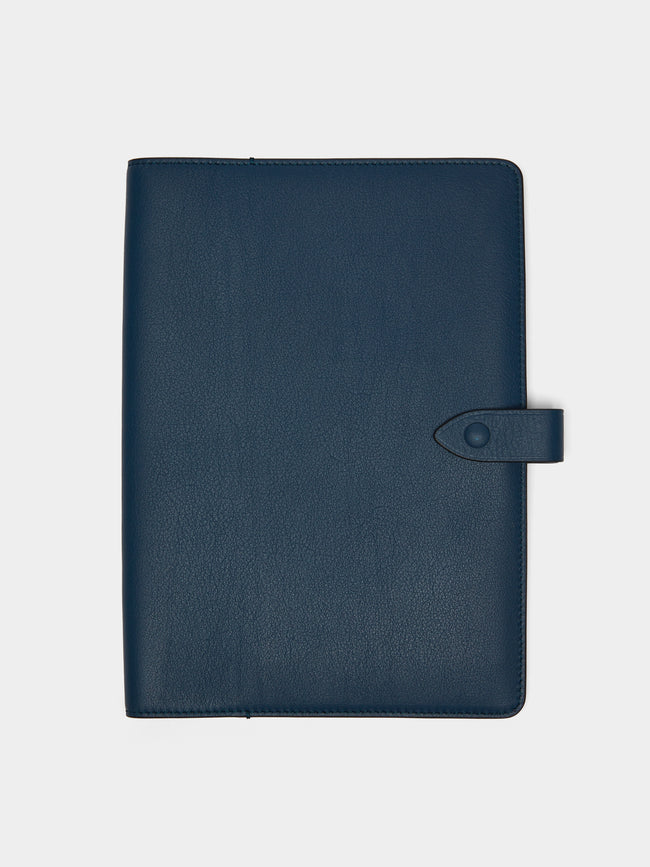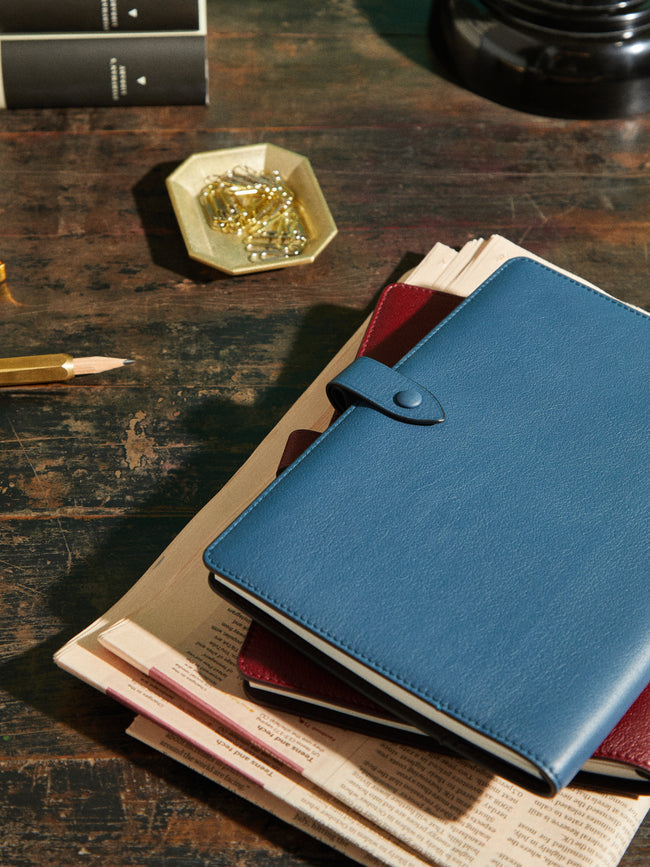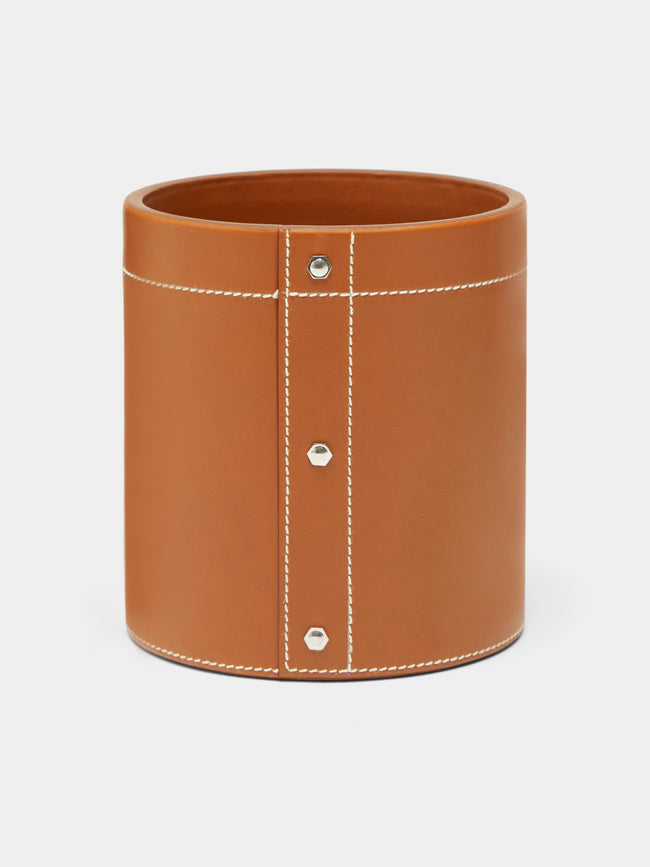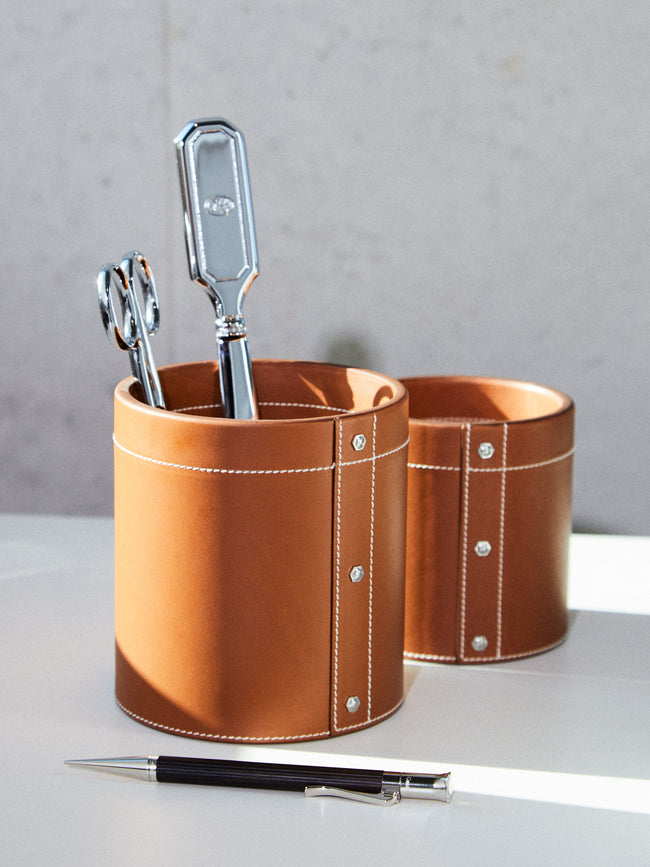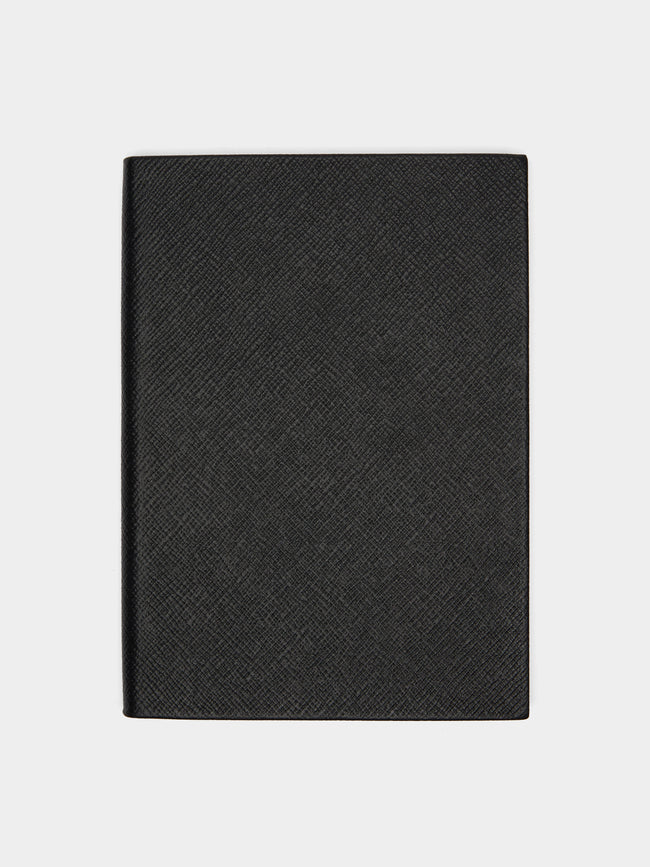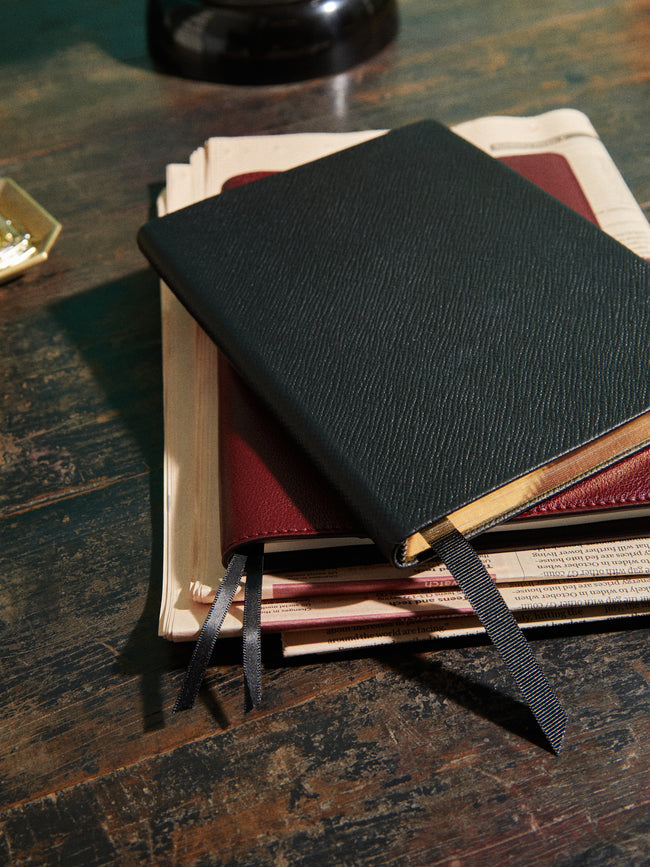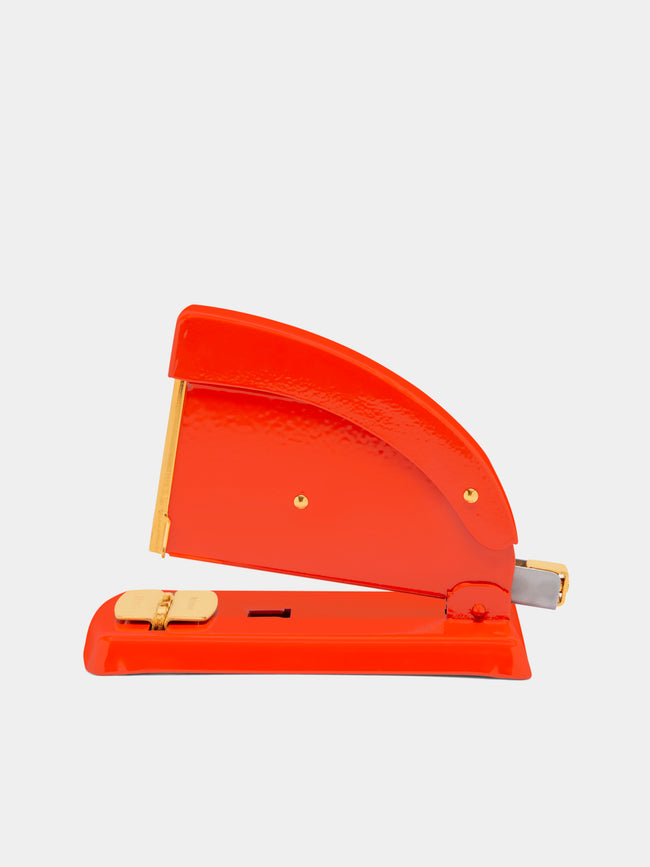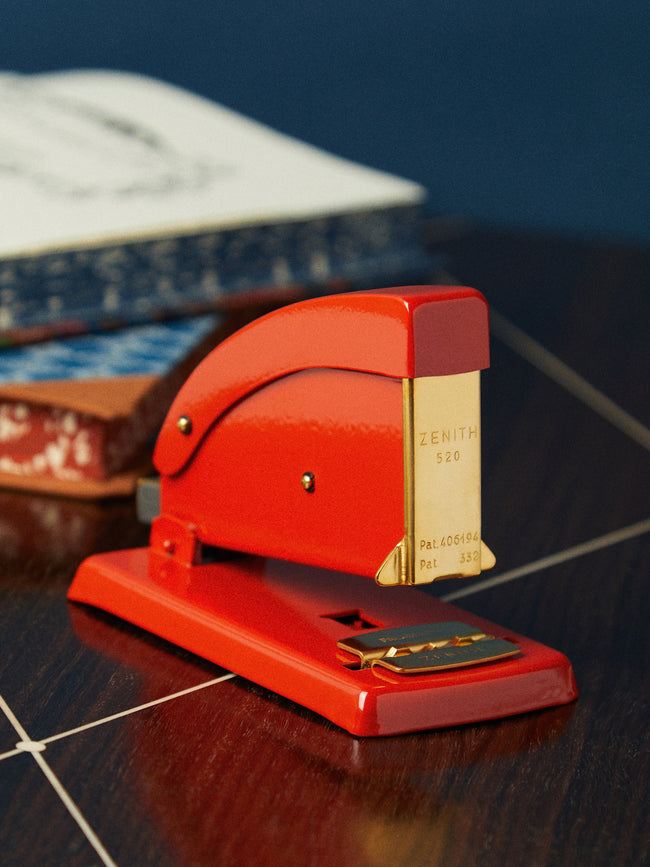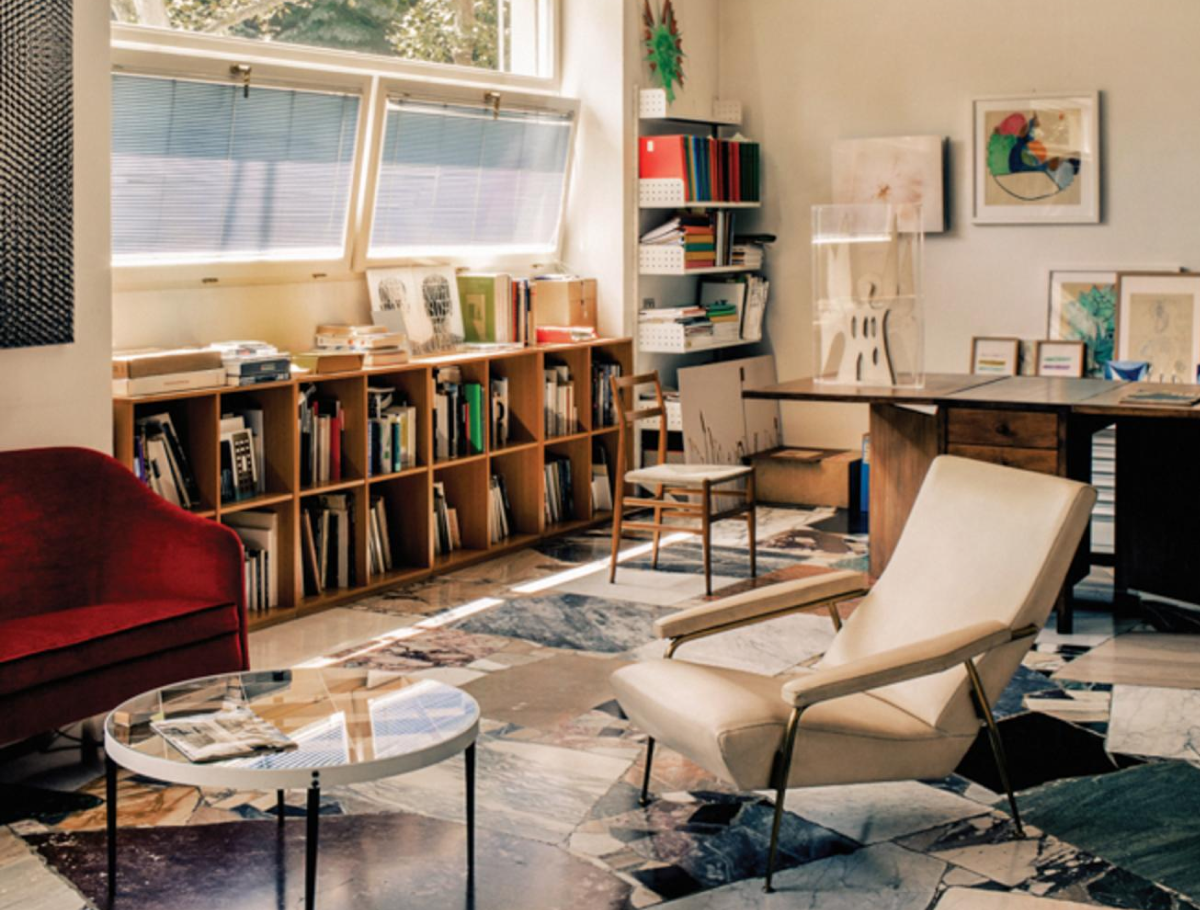

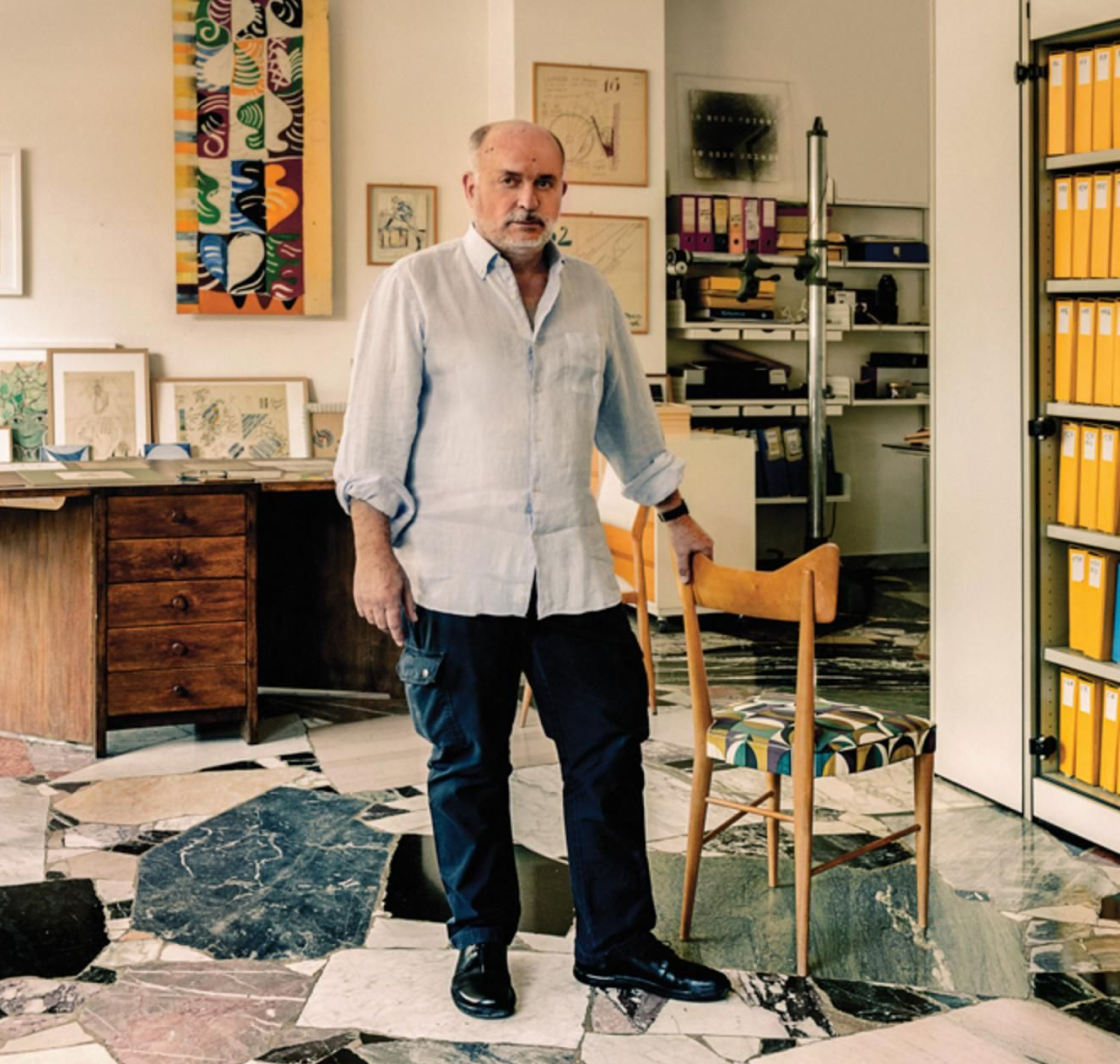
Gio Ponti’s archive in Milan
Giovanni “Gio” Ponti was a fan of taking his work home with him. And why wouldn’t he? The prolific mastermind behind architectural icons and kitchen cutlery alike had enjoyed huge success with his modular study desks (for Dassi, Pamono and Schirolli) and his era-defining Superleggera 699 chairs (for Cassina), which can be found in studies from Milan to Miami.
Both stood proudly in Ponti’s own marble terrazzo study on Milan’s Via Dezzi, joined by protypes from his collaboration with Molteni&C – including the D.153.1 armchair and the D.555.1 Coffee Table.
Zoom into the top of his shelving system and you’ll spot a painting on Perspex, a new medium that Ponti started experimenting with in later life. As autobiographical as all that is, even the master of Italian modernism needed a filing system; see surfaces filled with binders and boxes. A man after our own heart.
Part study, part library, and a wholly joyful ode to objects
Jim and Helen Ede’s library/study space, Kettle's Yard, Cambridge
Part study, part library, and a wholly joyful ode to objects, the mezzanine area of Kettle’s Yard is a familiar image from Jim and Helen Ede’s home-turned-gallery in Cambridge thanks to its pilgrimage status. This space, like every other room, corridor and occasional corner is a result of the couple’s democratic approach to art and sensitive arrangement of belongings. In this considered space, bookshelves play home to treasured tomes, small sculptures, glassware, and artwork in contrasting frames. A happy cacophony of objects that converse with ease, complemented by rugs underfoot and unfussy wooden furniture, it’s a place to read, write, reflect – and collect.

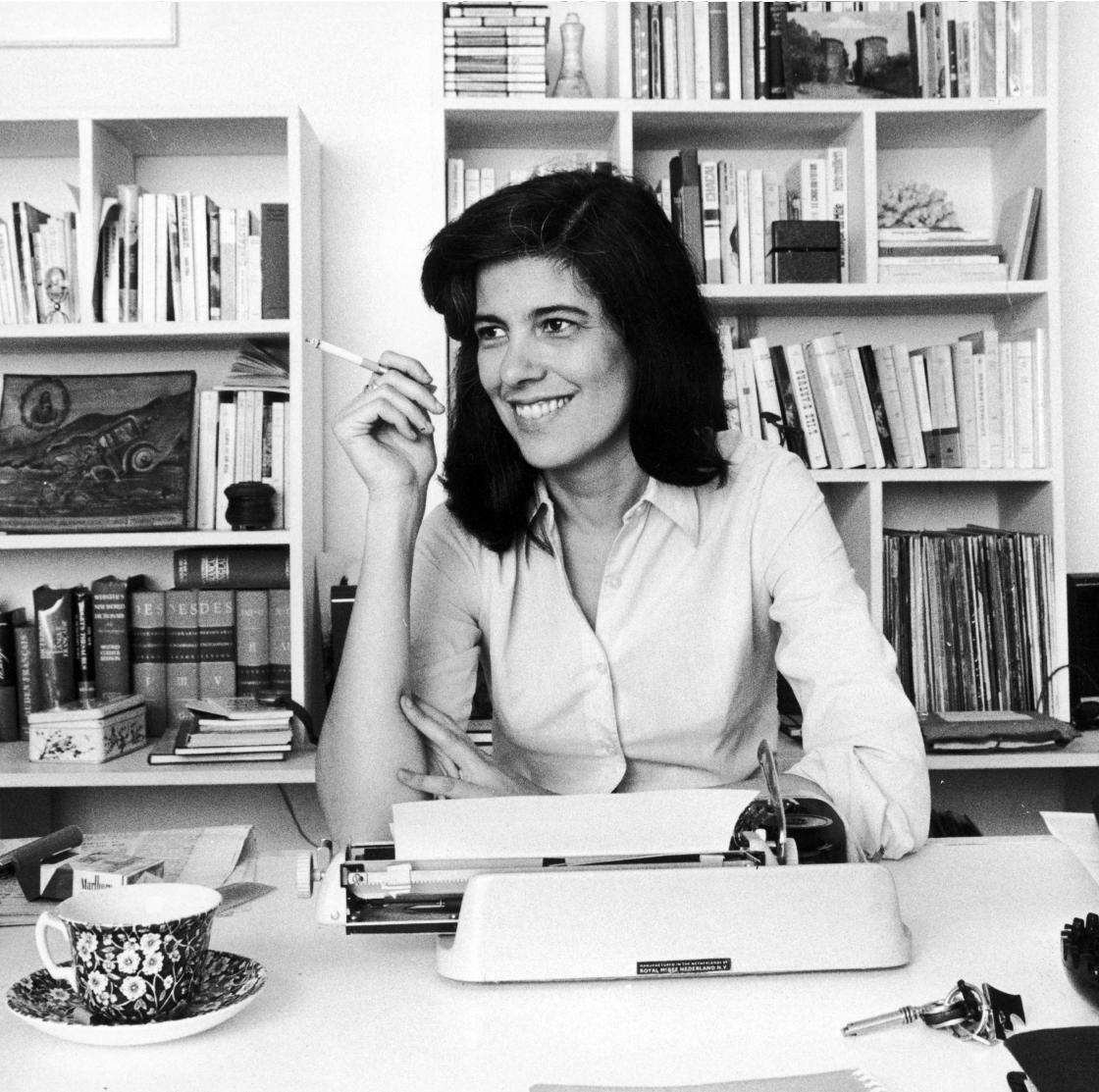
Susan Sontag’s study in France
Like many writers who find themselves burning the midnight oil at their desk, Susan Sontag surrounded hers with the home comforts that take a study from blank space to creative sanctuary. Beside the typewriter that had inked celebrated works such as Against Interpretation (1966) and The Way We Live Now (1979) stands a glass ashtray and lighter, a wavy occasional bowl, and the ubiquitous cup and saucer (props for their not being a medley of mugs).
Behind her on her gallery-white shelves, trinket boxes and treasures sit beside records and cassette tapes and Sontag’s notebook. A very real case of the ordinary meeting the extraordinary.
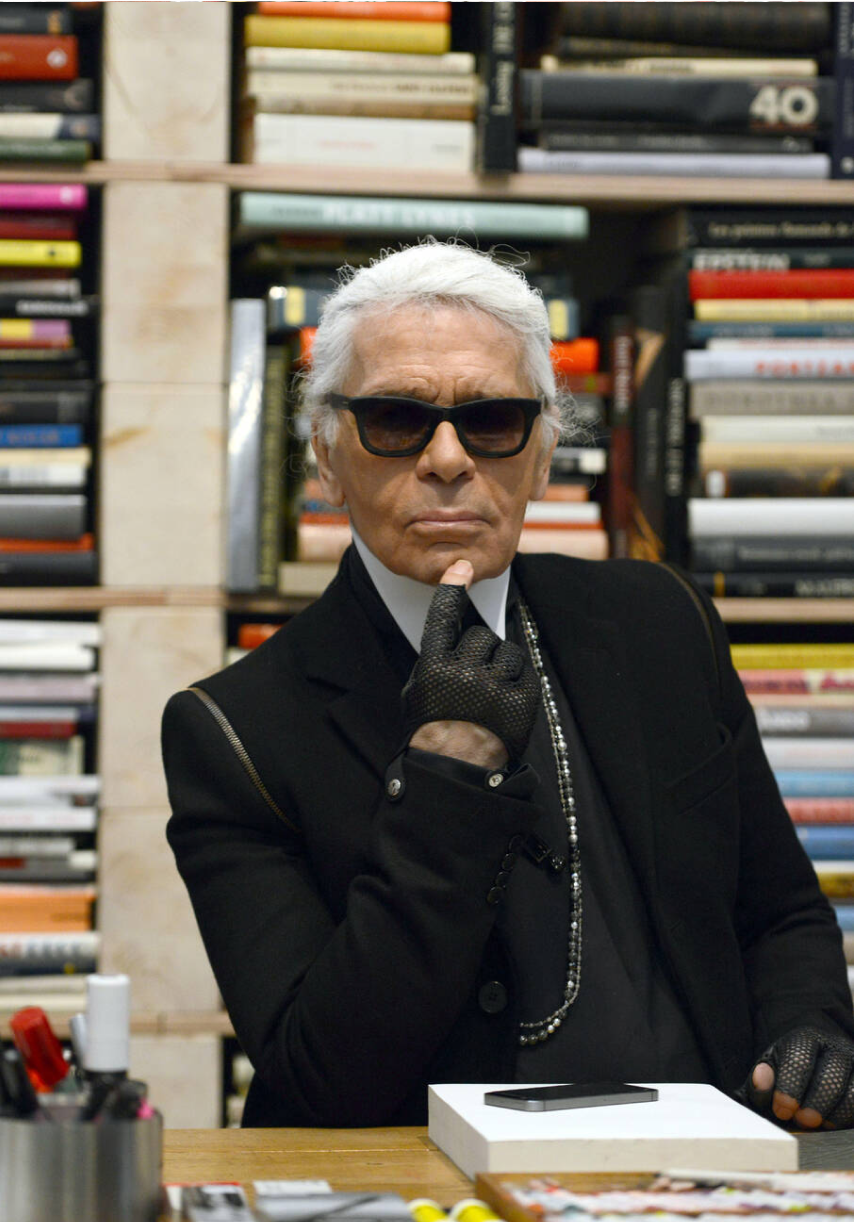
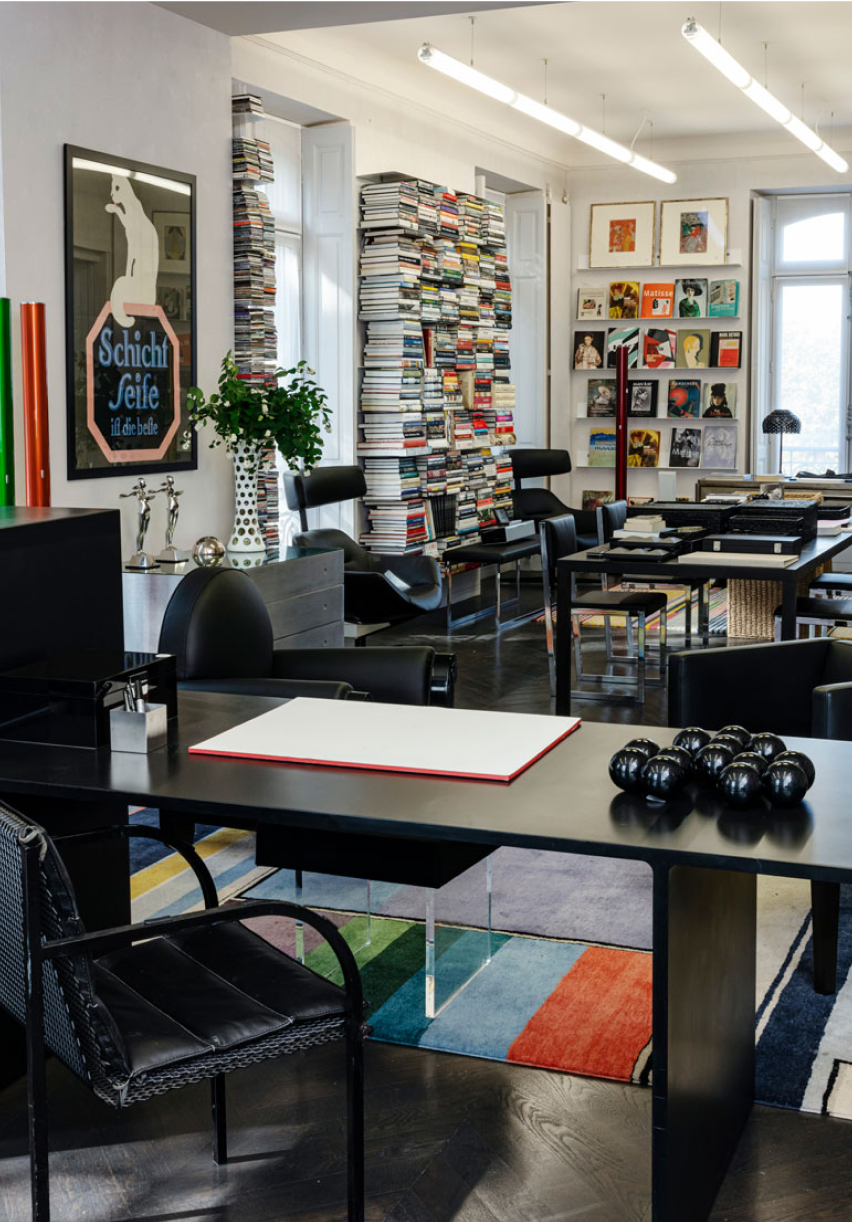
Karl Lagerfeld’s library in Paris
The late fashion designer Karl Lagerfeld’s legacy is to have shaped the face of fashion for the majority of the 20th and 21st centuries to date. He also leaves behind a bonafide bookworm’s dream of a study in his sprawling office at 15 Rue des Saint-Pères in Paris.
Lagerfeld is said to have owned north of 140,000 tomes (120k of which are catalogued). Many of these stood proudly in this room on floating shelves that were reached by a spiral staircase, or plucked by scaling a carbon ladder designed by Marc Newson. A lifelong collector of objects, many design icons passed through the space including Gio Ponti’s Superleggera chairs and Gerrit Rietveld’s Zig Zag seat. But Lagerfeld’s most charming possession has to be the limited-edition KarlBox he designed for Faber-Castell, home to his pastels, pens and pencils – an object he is said to have adored.
Words by Scarlett Conlon
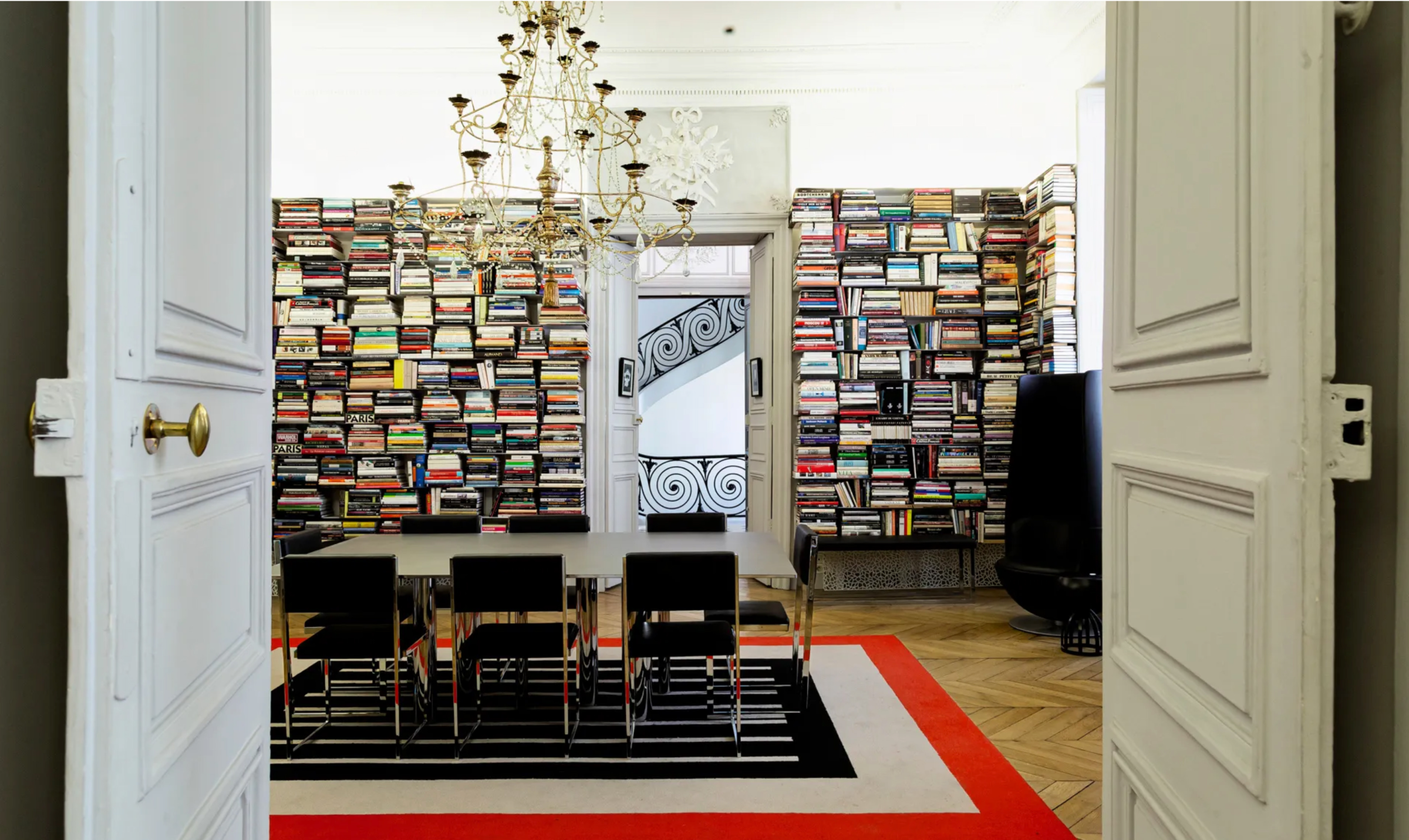
Gio Ponti: Mattieu Salvaing
Susan Sontag: Photo by Jean-Regis Rouston/Roger Viollet via Getty Images
Lagerfeld Study: Courtesy of Sotheby's
Lagerfeld Portrait: dpa picture alliance / Alamy Stock Photo
